Blog
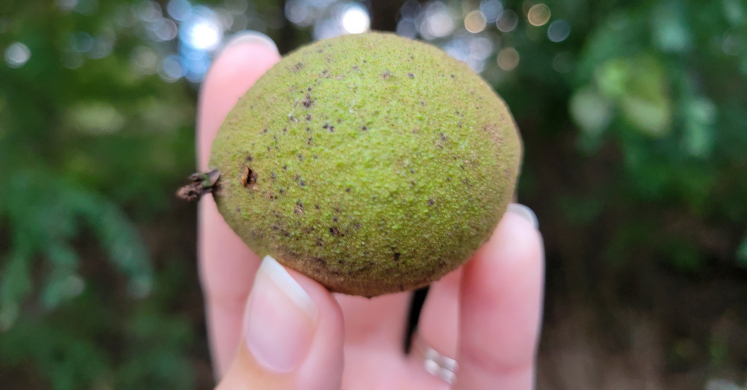
#bioPGH: A Nutty Feast!
 A resource of Biophilia: Pittsburgh, #bioPGH is a weekly blog and social media series that aims to encourage both children and adults to reconnect with nature and enjoy what each of our distinctive seasons has to offer.
A resource of Biophilia: Pittsburgh, #bioPGH is a weekly blog and social media series that aims to encourage both children and adults to reconnect with nature and enjoy what each of our distinctive seasons has to offer.
There has been an extra hazard in my backyard for the last two weeks: falling black walnuts! When we’re out tending to our chickens first thing in the morning, we’ve had to keep an eye on the branches above as early-rising squirrels scamper across their aerial superhighway to collect a nutty breakfast…and occasionally drop a solid green bomb towards an unsuspecting human (or chicken!) below. If you look up into the tree, the leaves have mostly fallen already, and the abundance of walnuts are in clear view — what a feast for the squirrel world! Well, since I have been ducking falling walnuts every morning, it seems fitting to learn more about them today. Let’s explore!
A grey squirrel carries a walnut to the branch of a mulberry tree (though behind locust tree leaves) but is chased away by a red squirrel.
Black walnuts (Juglans nigra) are in the walnut tree family Juglandaceae, along with hickories (e.g. shagbark, shellbark, pignut, bitternut, etc.) and pecans. Each single leaf is usually over a foot long and made up of between 15-23 leaflets along a rachis (the “stem” each leaflet attaches to). They start producing their characteristic nuts between age 8–15 years, depending on where they are geographically and what the habitat conditions are like. They can grow to be 100–130 feet tall, but height isn’t the only way to measure a tree! The current American Forests National Champion black walnut tree is in Virginia. Standing at 104 feet tall, this tree has a crown spread of 56 feet, and a trunk circumference of over twenty feet.
An interesting feature of black walnut is their allelopathic tendency, meaning black walnut produces a compound that can be herbicidal to some other plants. Various parts of the black walnut plant produce hydrojuglone, a harmless chemical that converts to the potentially toxic juglone once it’s outside the plant. Not all other plants react to the presence of juglone, but some crops like tomatoes, peppers, potatoes, alfalfa, and asparagus seem to wilt within a 50-ft radius of black walnut trees, even months after a tree has been removed. Other plants, however, seem completely unbothered. Squash, beans, corn, and many fruit trees are resistant to juglone and don’t wilt at all (a more complete plant list is here). Since black walnut trees are an essential member of local food webs, the easiest way to manage the slight allelopathy is to just be mindful of what is planted where. We can all share the space!
Connecting to the Outdoors Tip: Now, September through October, is the time for black walnut harvesting, if you’d like to give it a first try along with me! As a quick warning, it’s a slow and very messy process; but I’d still say worth it. You can search for websites and videos with instructions on how to harvest, and I found this page (not an affiliate/partner) that offered clear directions. As a slight modification, I opened the outer green husks by stepping on the walnuts on blacktop pavement. It didn’t break the inner shell, and it seemed less likely to stain clothes or hands. The cleaned walnuts are currently curing in a bin in my garage — I will let you know how they turned out in a few weeks!
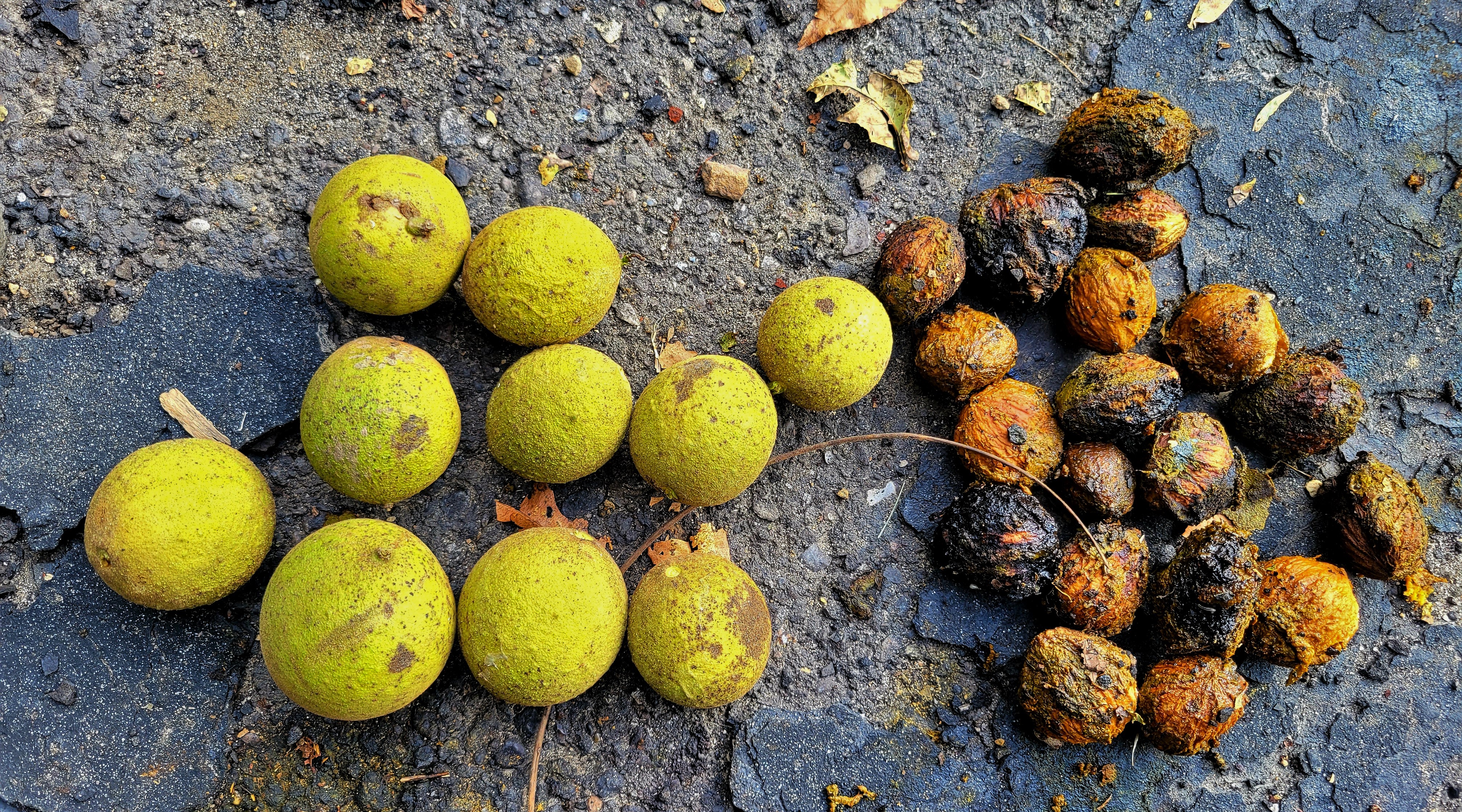
Collecting the fallen walnuts!
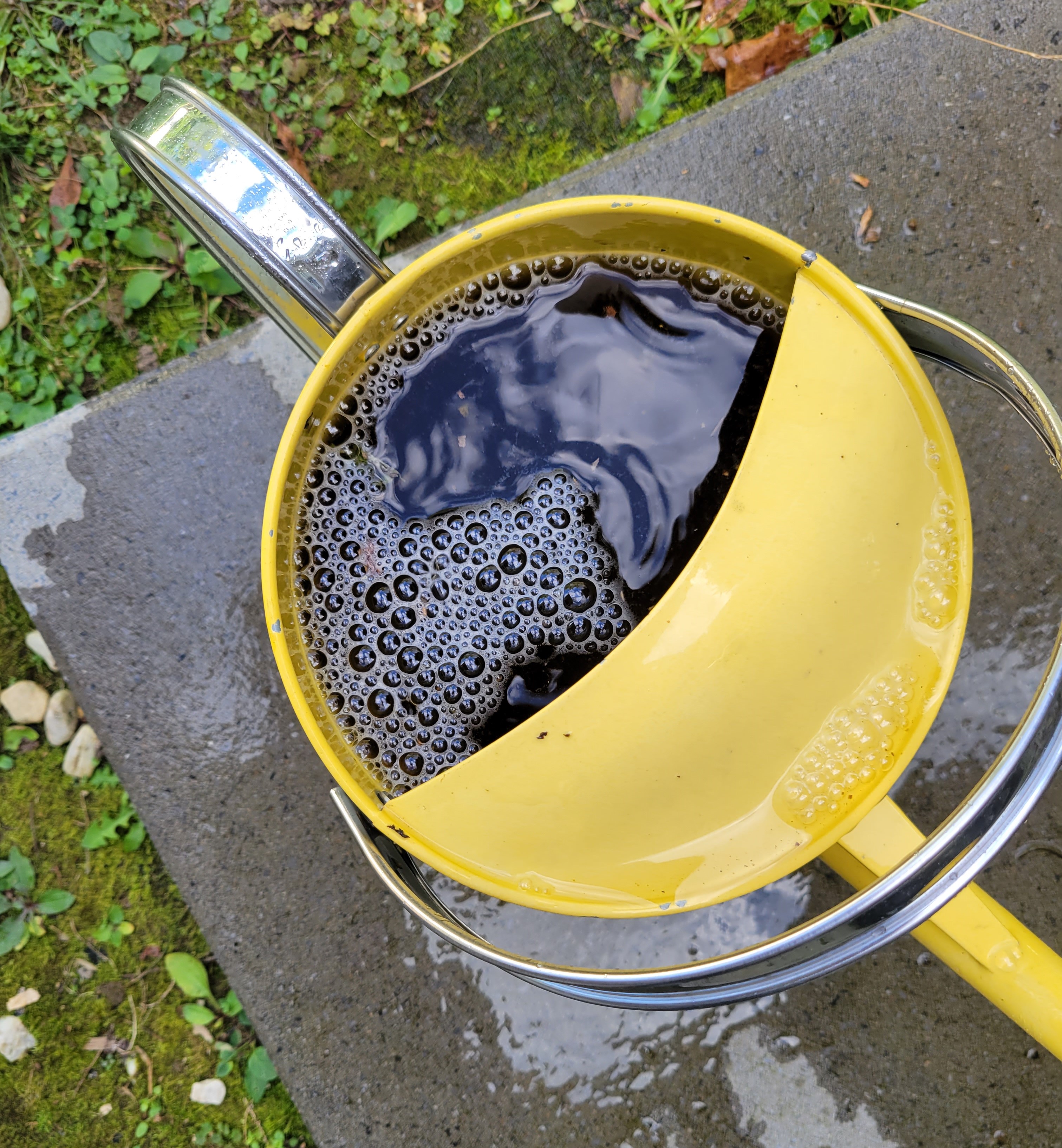
The water after scrubbing the walnuts! They are now currently drying, but I will let you know how it turns out!
Update!
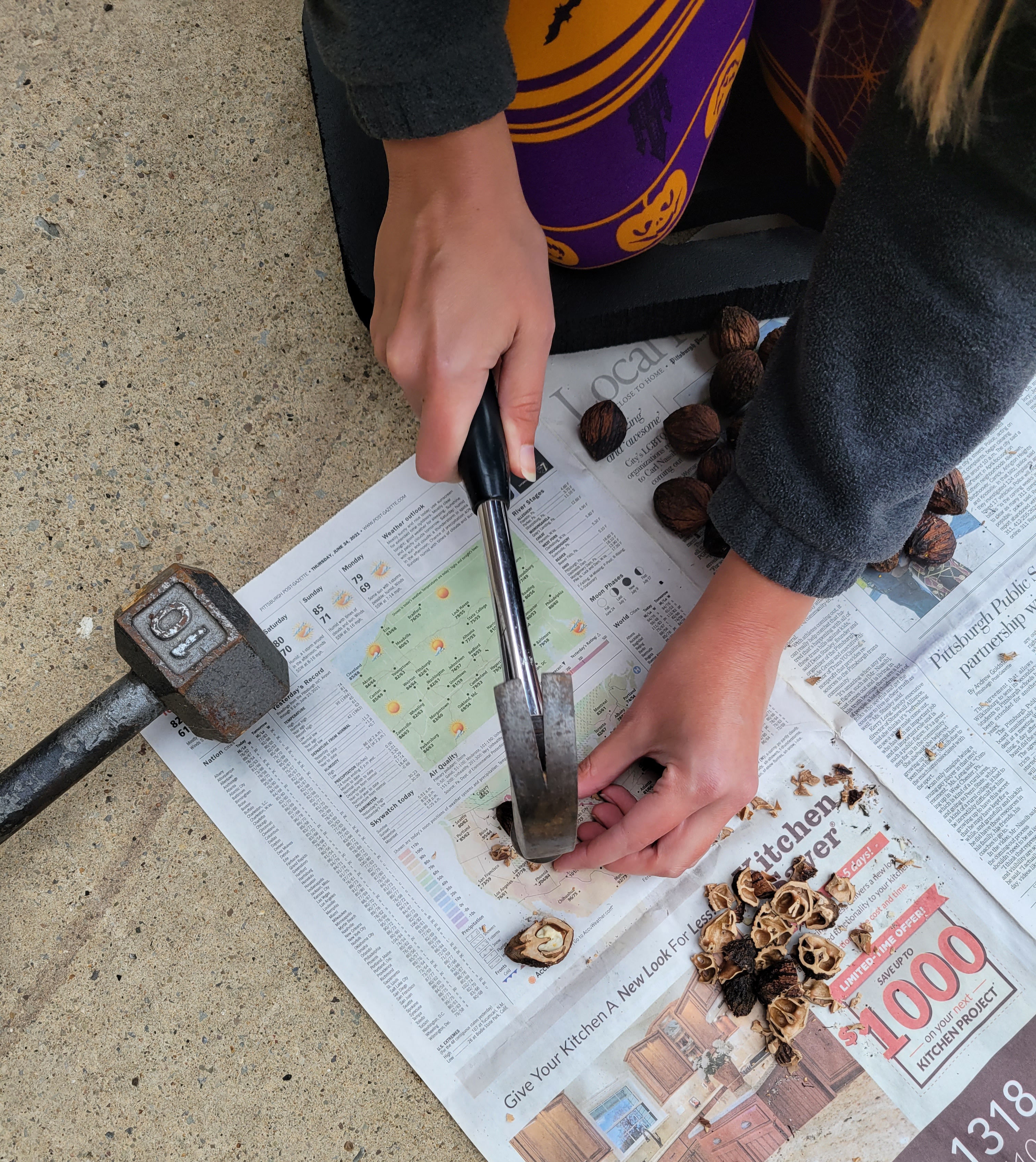
After drying in our garage for three weeks, the nuts were ready! Since we didn't have a nutcracker, we used a hammer to crack them open, which was precarious business but worked out!
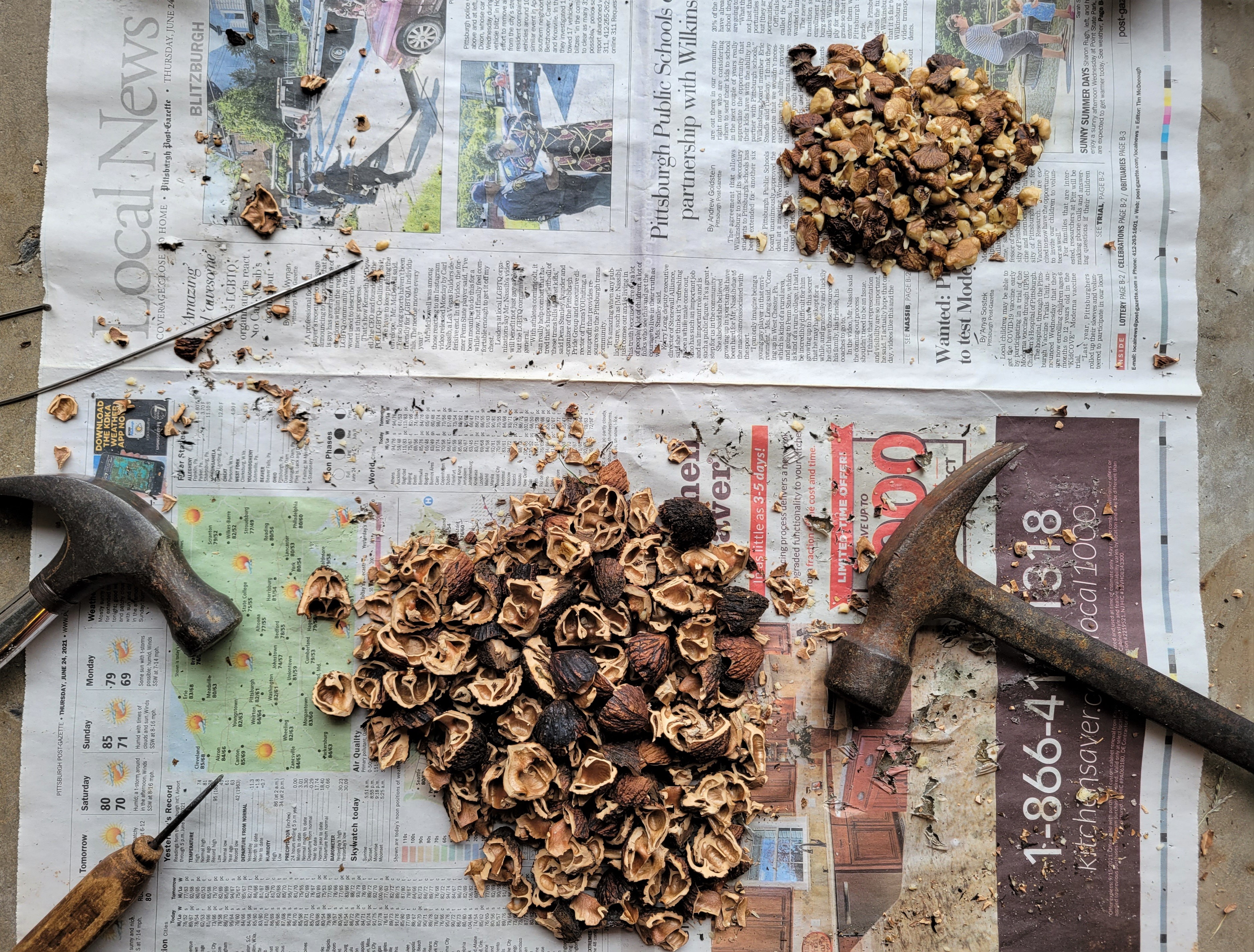
So much work went into our cup of nuts! It's a good reminder of how much work goes into our food. And as a taste-test review, the nuts were strong but quite tasty. Will try again next year!
Resources
Illinois Extension: Preparing Black Walnuts for Eating
US Forest Service: Black Walnut
Arbor Day Foundation: Black Walnut
Photo Credits: Header, Matthew Beziat, CC-BY-NC-2.0; all other images, Maria Wheeler-Dubas

